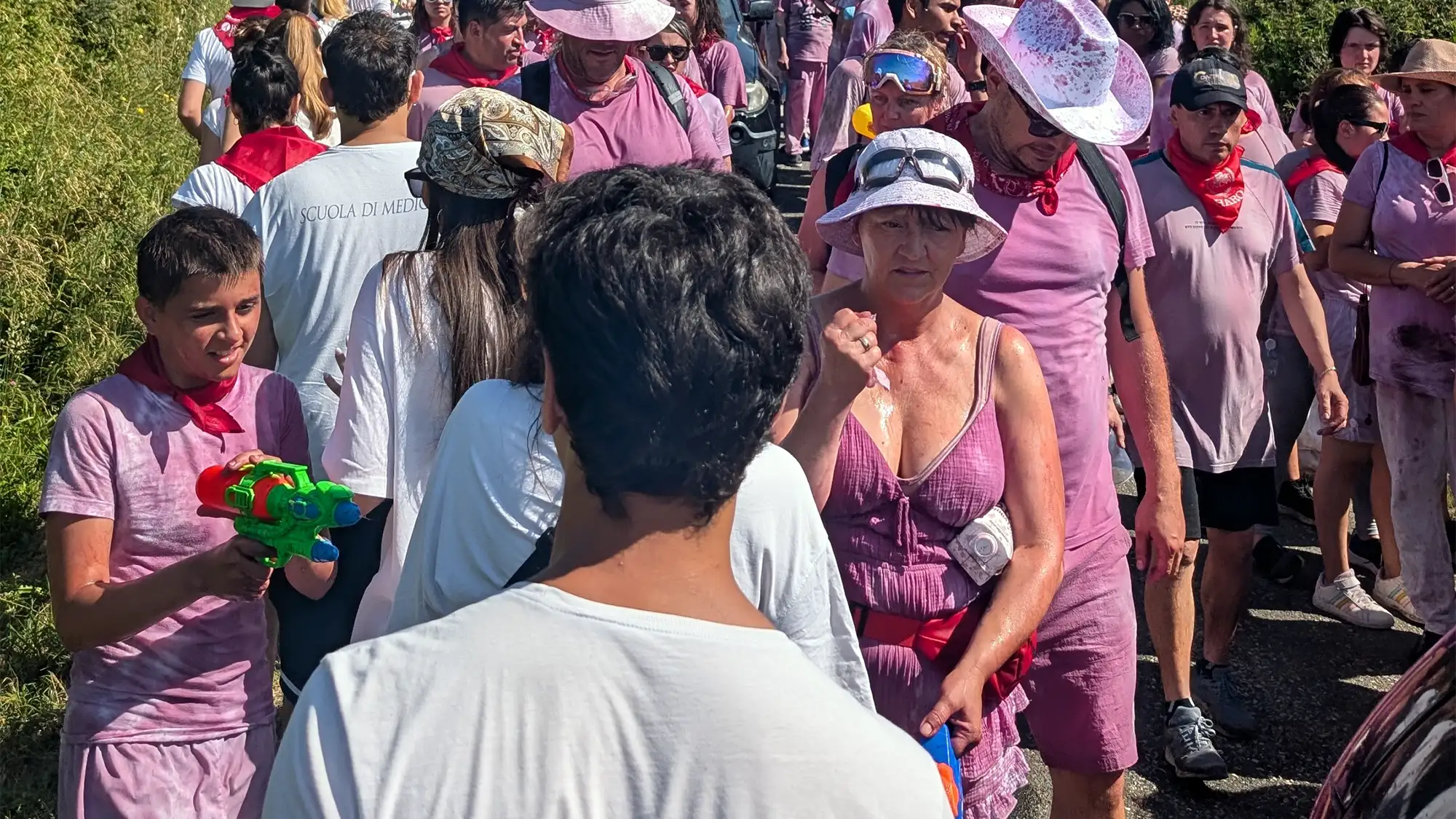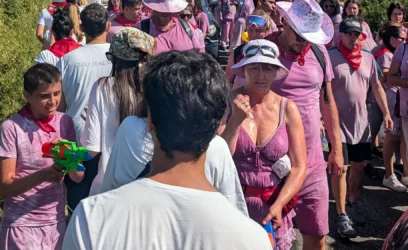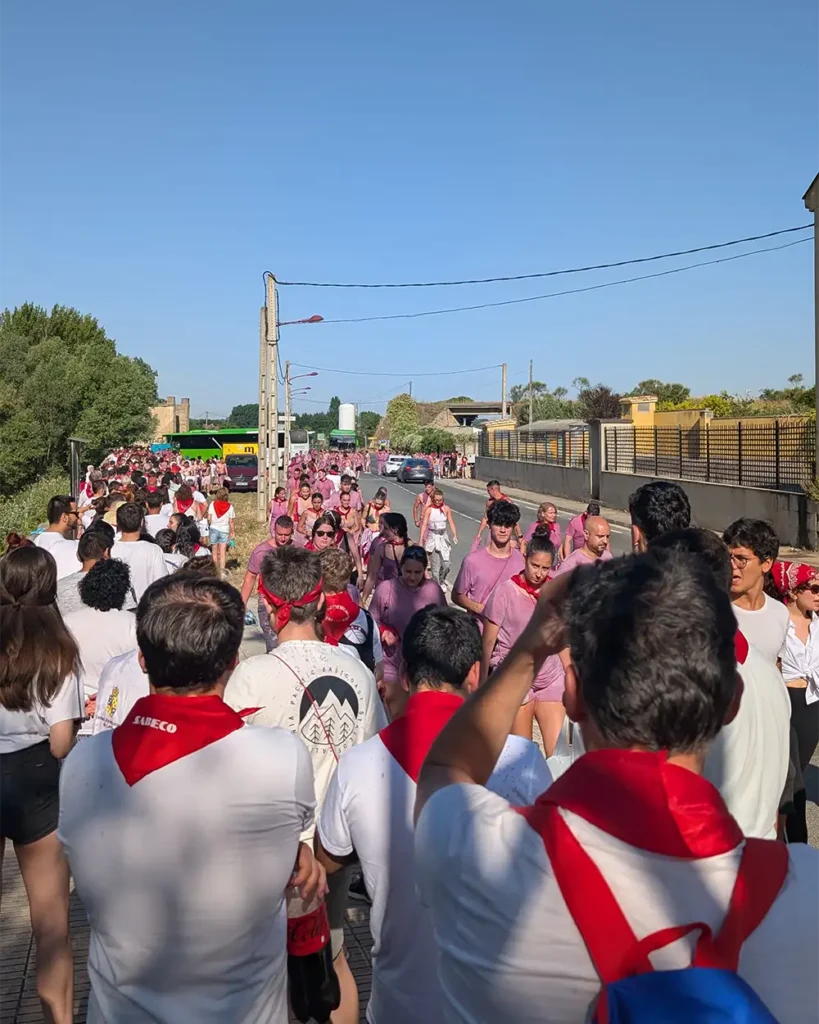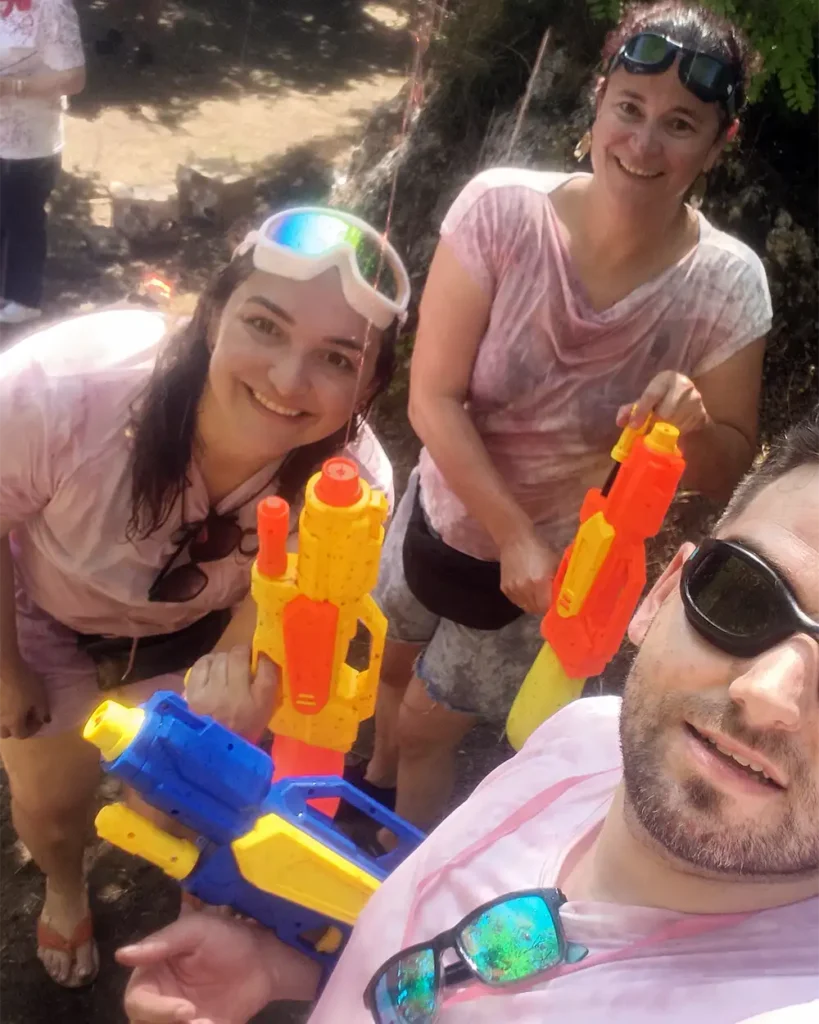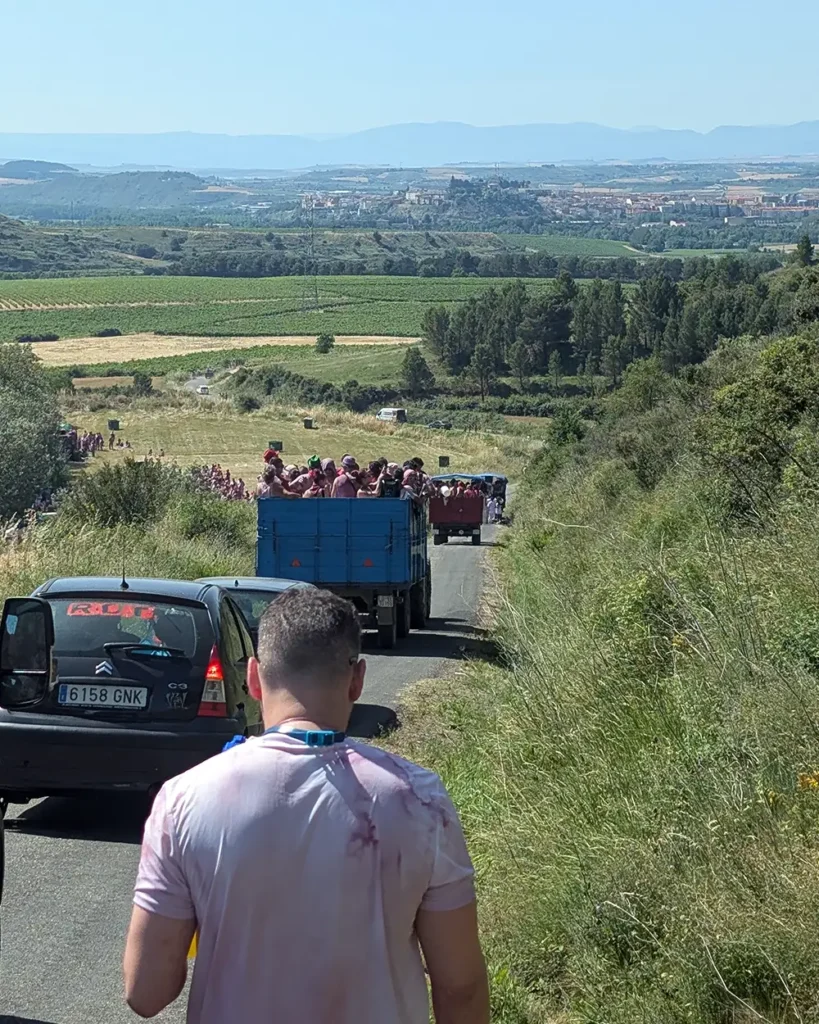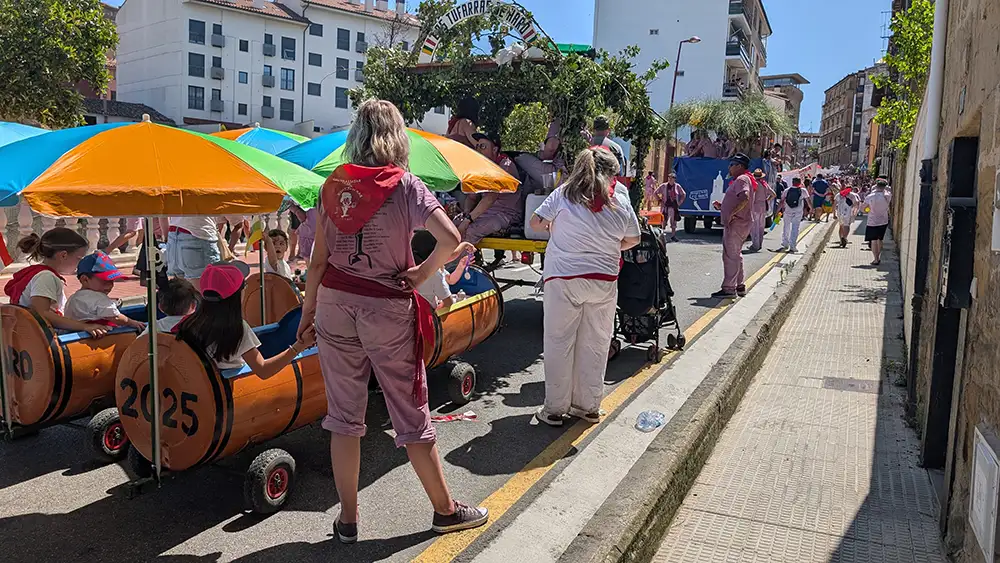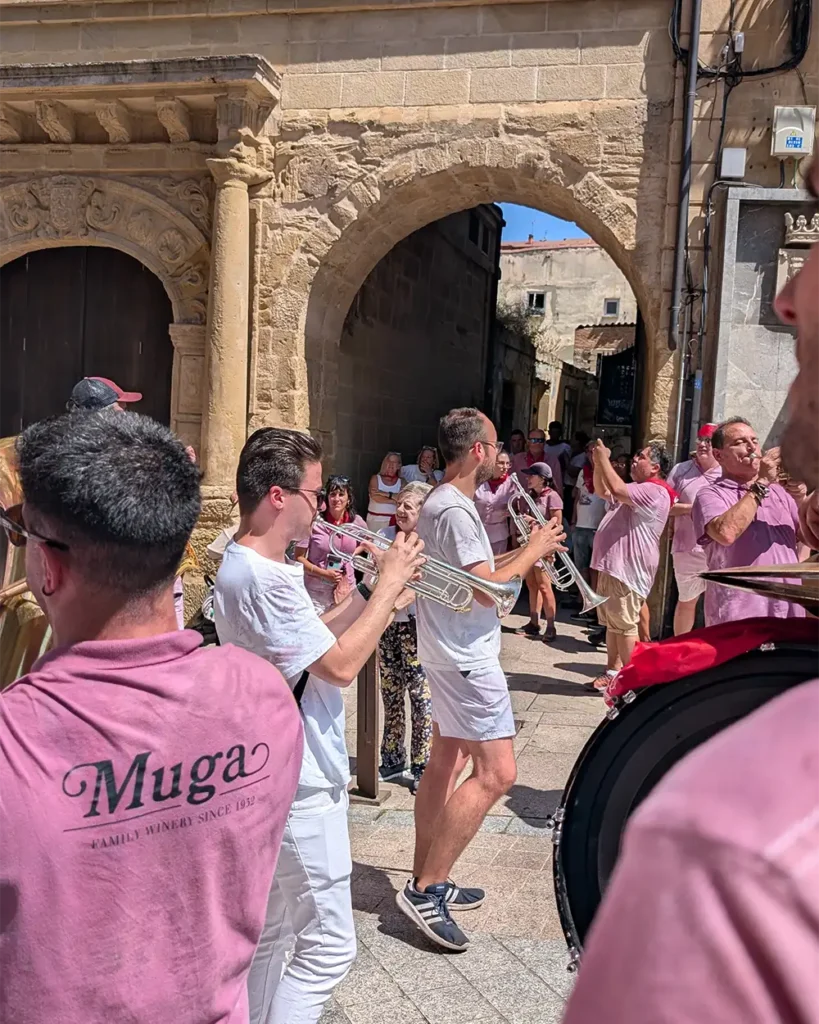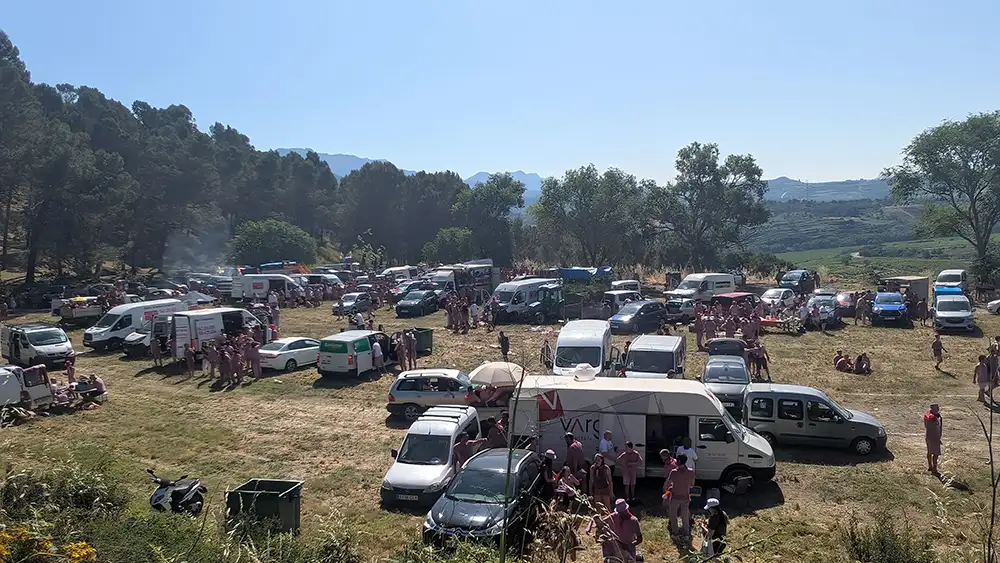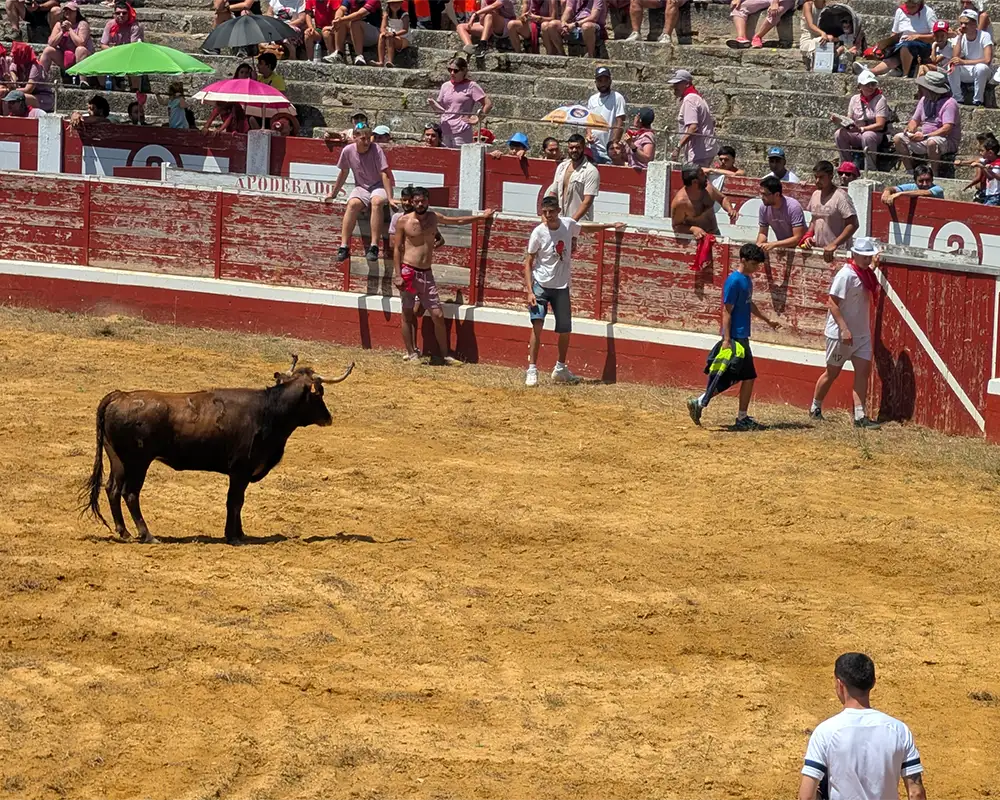In Haro, in the heart of the La Rioja wine region, one of Spain’s most unique and chaotic festivals takes place annually. Every year, on the 29th of June, thousands of locals and tourists dress in white, climb a hill and fight a “battle” where the only ammunition allowed is thousands of litres of red wine, staining the landscape and the participants purple.
But how did this unique tradition begin? Are there rules for this battle and, most importantly, how can you take part? This guide explains everything you need to know about the famous Haro Wine Battle, from its history to practical tips for anyone wanting to experience it for themselves.
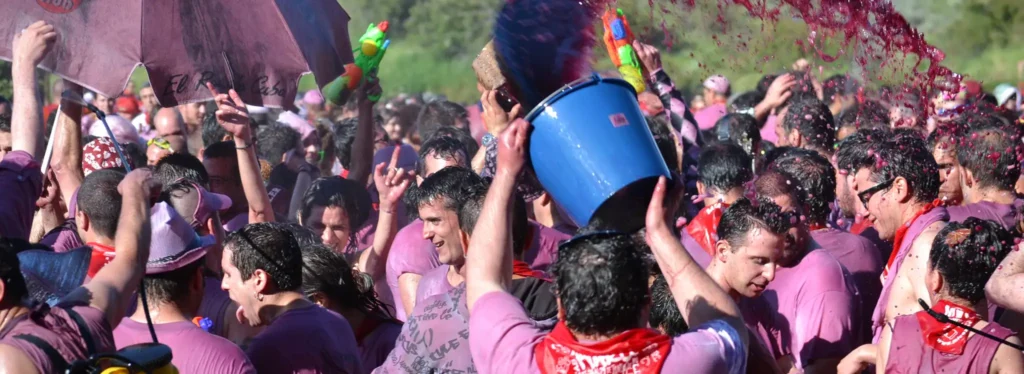
What is the Haro Wine Battle?
The Haro Wine Battle is a Festival of National Tourist Interest that takes place every 29th of June at the top of the Riscos de Bilibio, a mountainous area about 7 km from the centre of Haro. Access to the site is via a narrow road, and on the day of the event, there is a special bus service to take participants to the location.
The origin of the festival, however, lies not in the battle, but in a religious tradition. In essence, the event is a romería (a festive pilgrimage) to honour Saint Felices, a hermit who lived on the site in the 6th century. The transformation from a solemn procession to a wine battle was not planned. It all began spontaneously during the lunch that followed the mass. Fuelled by the joy and abundant wine of the La Rioja region, the pilgrims began to playfully stain each other with the drink, using traditional wine skins.
The idea was not an immediate success. In the early 20th century, local newspapers even criticised the “brutality” of the antics, which deterred participants who did not want to have their clothes ruined. However, the festival overcame the criticism, and what was once a spontaneous act became the main attraction, being officially named the “Batalla del Vino” in 1949.
Practical information
Planning your trip to the Wine Battle is essential, as the festival attracts thousands of people to a relatively small town. Organisation is the key to ensuring a smooth and fun experience. Here, we’ve gathered all the practical information you need, straight to the point and with no fuss.
When does the Wine Battle take place?
The date is fixed and sacred: the battle always takes place on the morning of the 29th of June, St Peter’s Day, regardless of the day of the week.
We recommend arriving in Haro on the eve of the battle, the 28th of June. The buses to the hill start running at 7 a.m. for the mass, and our tip is to go as early as possible. At the beginning, local wineries provide barrels of wine to reload participants’ ‘weapons’, but this source of extra ammunition runs out over time.
For those with more time, it’s worth knowing that the festivities in the town begin almost a week earlier, so arriving on the 27th or before is also a great option to get the full experience.
The Day of the Battle
- 7:00: Meet in the area by the Tirón river bridge for the bus journey up the hill. Buses run every 30 minutes and the journey is 7km.
- 8:00: The walk from the bus stop up to the Riscos de Bilibio.
- 8:45: A short mass at the San Felices chapel. At the end of the mass, a rocket is launched to signal the start of the Battle.
- 11:30: The last bus back to town.
- 12:00: Arrival at the Plaza de la Paz in a procession with brass bands, heading towards the Plaza de Toros.
- During the day there are events and music around the city.
- 00:00: The party ends with the Toro Embolado, a traditional ‘fire bull’ event (not a real bull)
Timings are approximate and based on previous years. It’s not mandatory to arrive for the mass; the buses run every 30 minutes until 10:00 a.m. We recommend arriving as early as possible, because the earlier you are, the more people and more wine for ‘ammunition’ there will be.
What to wear and bring to the battle
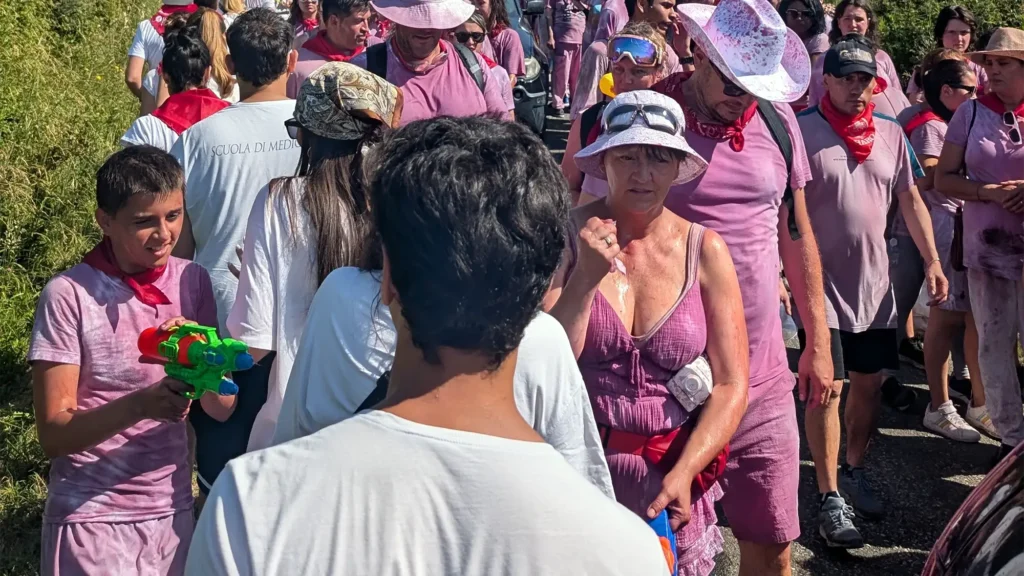
- White clothing: It’s the unofficial uniform. Wear white clothes, preferably old ones, as they will be permanently stained purple.
- Closed-toe, comfortable footwear: You will be walking on uneven, wet and slippery ground. Old trainers are the best option. Avoid flip-flops or sandals.
- Red scarf: Many participants wear a red scarf tied around their neck, the traditional pañuelo rojo of Spanish fiestas. You can buy one cheaply in Haro.
- Swimming goggles: It might seem like an exaggeration, but this is the most valuable tip. Wine in your eyes stings, and goggles allow you to take part in the ‘war’ more comfortably.
- Protection for your phone and camera: If you’re taking your mobile, use a waterproof case. The best option for photos is an action camera, like a GoPro.
The permitted ‘weapons’
Any container that helps you throw wine is allowed, except for glass bottles for safety reasons. The most common ‘weapons’ are:
- Wine skins (Botas de vino): The most traditional and authentic option.
- Water pistols: Efficient and very popular.
- Buckets and plastic bottles: For mass attacks.
- Garden sprayers: Used to cause maximum purple ‘damage’.
You can buy these items in the town’s shops in the days leading up to the festival.
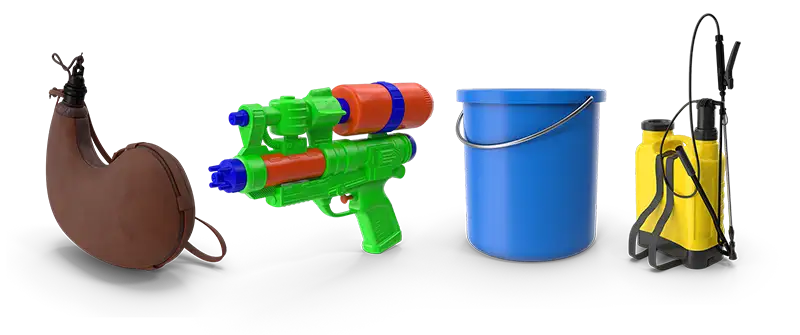
How to get to Haro?
By plane: The nearest airports are Bilbao (BIO), about an hour’s drive away, and Logroño (RJL), 40 minutes away. Madrid Airport (MAD) is an option for international flights, but it is about a 3.5-hour drive from Haro.
By car: Having a car allows you to freely explore the wineries and villages of La Rioja in the days before or after the festival. However, a warning about getting to the battle itself: on the 29th of June, car access to the Riscos de Bilibio is closed off very early. If you’re not one of the first to arrive, you’ll have to leave the car far away and go up on foot or by bus.
By bus or train: The bus (mainly the company ALSA) is usually the most direct way to get to Haro from cities like Bilbao, Logroño and Madrid. The train (Renfe) is also an option. For both, it is crucial to buy tickets well in advance, as they sell out quickly for the festival date.
We recommend taking a look at our partner, OMIO, which lets you compare all forms of transport.
Recomendamos dar uma olhada no nosso parceiro OMIO, que te deixa comparar todas as formas de transporte.
Where to stay in Haro?
This is perhaps the most critical part of all the planning. Haro is a small town with limited hotels that get booked up incredibly quickly for the festival date.
Our recommendation is direct. You should book your accommodation between October and December of the previous year. This is no exaggeration. If you leave it any later, you are almost guaranteed not to find any vacancies in the town. If you can no longer find hotels in Haro, look for accommodation in nearby cities that are a short drive away, such as Logroño, Vitoria-Gasteiz or Miranda de Ebro.
To search for and secure your spot in advance, we recommend using our partner, Booking.com. There you can compare prices, see hotel locations on a map, and filter for the best options in both Haro and the neighbouring towns.
The Full Experience
To give you a real insight into what the Wine Battle is like, we’re going to share our own experience, including the good parts and, especially, the mistakes. We fell into a beginner’s trap when we decided to leave Madrid early on the same day, ending up in Haro close to 9 a.m.
On arrival, we found a huge queue for the bus. Despite the long wait, the atmosphere already showed the vibe of the festival. People were singing, forming makeshift teams, and the energy was genuinely contagious.
The problem was that, because of the time we arrived, we caught one of the last buses going up. When we finally reached the top of the hill, the party was ending. The official setup had already been dismantled, there was no more music, and the wine from the refill barrels had run out. Our great “wine battle” ended up being a water fight at a nearby fountain. A quick one, because soon after we had to catch one of the last buses back down, amid the strong, sour smell of fermentation that completely dominated the atmosphere.
So, after an experience with so many setbacks, what is our final verdict? Is it worth taking part?
The answer is a resounding yes. The Wine Battle is very much worth it. Even though we only arrived at the end, we could feel the unique energy and collective joy that make this festival truly special. To be honest, we are already making plans to return next year.
Our story serves as a guide of what not to do, but also as proof of the festival’s power. It’s an event for those who love the energy of street celebrations, don’t mind the mess, and want to take part in something memorable. If you fit this profile, we guarantee the experience will be unforgettable.

